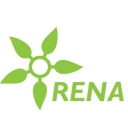Air Quality
The issue of air quality presents one of the areas in which the European Union has been very proactive. As the result of EU legislation, much progress has been made in tackling air pollutants such as sulphur dioxide, lead, nitrogen oxides, carbon monoxide and benzene. However, despite a reduction in some harmful emissions, air quality continues to cause problems.
The new Air Quality Directive (Directive/2008/50/EC) has entered into force on 11 June 2008. This new Directive includes the following key elements:
- The merging of most of existing legislation into a single directive (except for the fourth daughter directive) with no change to existing air quality objectives;
- New air quality objectives for PM2.5 (fine particles) including the limit value and exposure related objectives – exposure concentration obligation and exposure reduction target;
- The possibility to discount natural sources of pollution when assessing compliance against limit values;
- The possibility for time extensions of three years (PM10) or up to five years (NO2, benzene) for complying with limit values, based on conditions and the assessment by the European Commission.
Most of the ECRAN beneficiary countries are at early stages of transposing of the Air quality directive as well as at low level of implementation. Since this is the area that was not initially covered by the Regional Environmental Network for Accession – RENA (2010 – 2013), a separate Working Group under ECRAN has been created. The tasks of this Working Group are of cross-cutting nature and are implemented in close cooperation with other WGs established under Environmental Component of ECRAN.
The outputs of the Air Quality Working Group are the following:
- Training Needs Assessment
- Regional Training Programme
Training Needs Assessment defines the training topics for four regional trainings that are based on the provisions of the Air Quality Framework Directive and on the current state of play in the beneficiary countries. All trainings under are delivered in close coordination with the TAIEX Unit.


